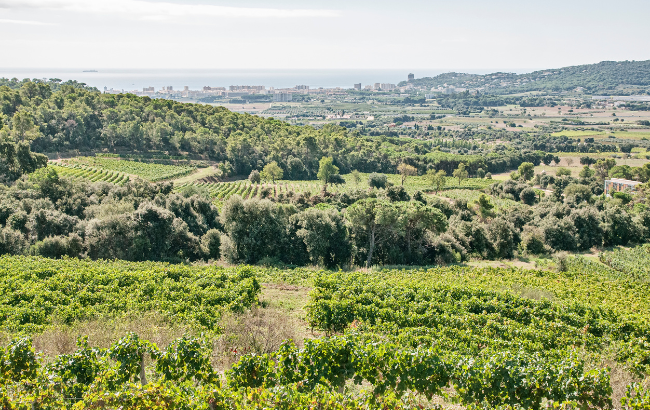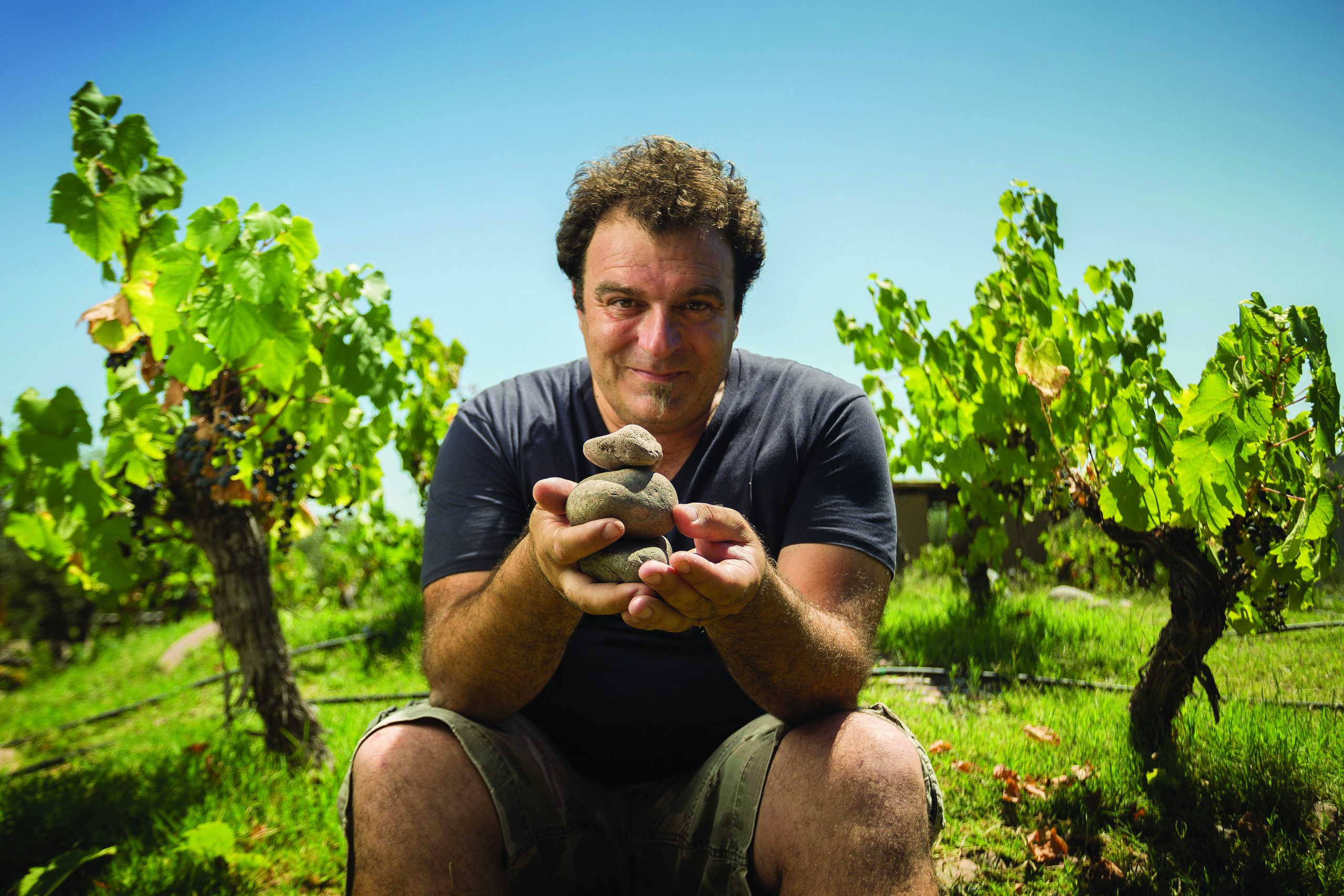This website uses cookies so that we can provide you with the best user experience possible. Cookie information is stored in your browser and performs functions such as recognising you when you return to our website and helping our team to understand which sections of the website you find most interesting and useful.
Top 10 ludicrous but true wine descriptors
By Darren SmithThe average wine drinker’s tasting vocabulary may be limited to “fruity” or “nice”, but the actual flavour of a wine is far more complex than that. As many as 1,000 different flavour compounds have been identified in wine – not all of them fruity, and not all of them nice.
Whether it’s a cast-iron fault such as TCA or one of the more dubious ‘flaws’ such as brettanomyces, or any one of the many hundreds of benign reactions occurring in the chemical phantasmagoria of a glass of wine, the aromas produced can often beggar belief – as the ludicrous but true descriptors featured in the following pages illustrate…
1 – Sweaty armpit
Much research has been conducted on that most mercurial of wine grapes, Sauvignon Blanc, which seems to express vastly different aromatic profiles depending on ripeness levels, on which terroir it has been grown and what kind of yeast its juice has been fermented with (around 400 of the estimated 1,000 volatile flavour compounds found in wine are produced by the yeast).
With Sauvignon Blanc it’s all about mercaptans (or thiols), of which 3-mercaptohexyl acetate (3MHA) is a biggy. As well as producing the passionfruit aroma associated with especially ripe Sauvignon, this compound also creates a distinct smell of sweaty armpit.
It’s especially present in the Sauvignon Blancs of Marlborough in New Zealand, thanks to the region’s high UV light environment. Even the winemakers in this part of the world use this descriptor – and encourage the development of the aroma.
2 – Cat’s pee
This is another one associated with (Marlborough) Sauvignon Blanc thiols, though also Riesling, Colombard, Sémillon, Cabernet Sauvignon and Merlot. It’s often euphemistically referred to as ‘boxwood’; it’s not though, it’s cat’s pee. The thiol in question is 4-mercapto-4-methylpentan-2-one, or 4MMP, which also has the more user-friendly name of the ‘cat ketone’.
As well as being found in Sauvignon Blanc – and blackcurrants (which explains why the descriptor ‘blackcurrant leaf’ is often used for Sauvignon Blanc) – this thiol is also found in actual cat urine. The smell merely depends on concentration: at low levels, they have a pleasant fruity odour, but this becomes more ‘feline’ at higher levels.
3 – Frazzles
What makes a wine grape a great wine grape is its ability to express so many different yet clearly defined aromas. Sauvignon Blanc does it brilliantly on the white side; Syrah does it equally brilliantly on the red.
Beyond the more ethereal violet flower, juniper and cracked pepper smells associated with this grape, when the wine is especially concentrated, there is something very much more meaty going on. We’re talking smoky bacon, we’re talking Frazzles.
Many fans of northern Rhône syrahs will be very familiar with this, but it’s not limited to this region – it’s also there in a lot of Châteauneuf-du-Pape and Syrahs from other regions of the world.
4 – Onion skins
Many bizarre descriptors associated with wine – rotten eggs, blocked drains, cooked vegetables – are the result of volatile sulphur compounds produced by a chemical reaction known as reduction. A particularly weird one is onion skins (sometimes garlic), produced by a sulphur compound called dimethyl disulphide.
Reduction is a tricky and frequently misunderstood term but it’s basically the opposite of oxidation, and the chemical reactions that it produce if not carefully controlled can be a wine’s undoing. Wines in a reductive state, if not stable, can be like an Pandora’s Box of funk.
5 – Rotten cabbage
Another volatile sulphur compound associated with reduction, this time one known as a methyl mercaptan, which produces a distinct rotten cabbage sort of smell – hardly an aromas you’d like to greet you when you stick your nose in a glass.
This particular sulphur compound has been implicated in reduction that occurs in wine with screwcap closures. Unlike corks, which allow a minute ingress of oxygen into the bottle, which has been found to be beneficial for the development of a wine, screwcaps are airtight and therefore help to create an environment in which reduction reactions can occur.
6 – Foxes
Rather than being associated with the chemical reactions involved in the fermenting or finished wine, this is a descriptor based on a flavour compound identified in a particular species of grapevine.
The compounds involved are methyl anthranilate, furaneol (2,5-dimethyl-4-hydroxy-2,3-dihydro-3-furanone), and o-aminoacetophenone, which are present in the fruit of vitis labrusca, and hybrid vine that was once commonly used for wine production in the US.
Partner Content
Indeed the red grape Concord remains a significant part of the North American – and Japanese – grape industries.
7 – Curry
The specific chemical compound here is 3-Hydroxy-4,5-dimethylfuran-2(5H)-one (good old 3-Hydroxy-4,5-dimethylfuran-2(5H)-one) – aka sotolon. This compound finds its way into white wines through grapes infected by botrytis, contributing what some wine bods describe as a toffee apple or maple syrup character.
Sotolon also comes in a much spicier guise though. Certain wines affected by oxidation can pick up a distinct curry leaf-like smell as they age. The Jura’s famous Vin Jaune is a good example.
The curry descriptor makes a lot of sense when you know that sotolon was first isolated from fenugreek. It’s also present in cumin.
8 – Manure
The wine writer Anthony Hanson MW wrote bluntly in his book Burgundy that “Great Burgundy smells of shit” (Voltaire is credited with saying something very similar).
This, you might think, would be the very last thing you would want a wine to smell of. But not so, the distinctly manurey smell of some mature Burgundy can send certain wine aficionados into raptures – much the same as would a stinky Epoisses cheese.
This aroma is not without controversy, however. It’s widely agreed that the manurey aroma in Burgundy – or any other red wine – is the result of infection from a single-celled organism called brettanomyces (aka brett). The specific compound in this case is thought to be 4-ethylphenol, or 4EP, which can also produce aromas of sticking plasters.
Many great wines from Burgundy to Bordeaux to the Rhone, to Piedmont and beyond are swimming with brett. Some people love it, others hate it. The winemakers, understandably stay out of it, more often that not muttering something about terroir before changing the subject.
9 – Kerosene
This is one of the oh so alluring aromas associated with Riesling. It may not sound pleasant but in combination with Rieslings characteristic citrus, honey and musky notes, it’s wonderful.
The compound in question here is 1,6 trimethyl-1,2-dihydronaphalene (or TDN) and develops in the skins of the Riesling grape at a certain level of ripeness. The kerosene smell is generally amplified with age.
10 – Mice
Mousiness is different from horsiness. Horsiness (or horse manure, sweaty saddle) is associated with brettanomyces, covered previously under the ‘manure’ heading.
Mousiness is not a result of brettanomyces infection, rather lactic acid bacteria, and hence can become a problem during malolactic fermentation. The compounds responsible are derivatives of the amino acid lysine, which, incidentally, is often used to treat cold sores.
These compounds not volatile at the acidity level of a wine, and therefore not obvious as an aroma. However, when mixed with saliva they can become very apparent on the palate, especially at the back of the mouth. Squeak.






This comment was deleted from the revised version as Anthony Hanson realised that what he’d been describing was brett and so, not surprisingly didn’t want to perpetuate the misleading association. Much the same occurred in Australia when luminaries such as James Halliday discovered that the leathery character of Hunter Valley Shiraz previously described as ‘sweaty saddles’ was in fact closer to blazing saddles than umami.
Thanks for all of that. But I’d question one thing, under point 10 : horsiness is not really the same as horse manure. Horsiness is the smell of clean horses, animal, but not manure. It’s a smell that also appears in violets. Some violets (not all) have horsy notes, so do some black truffles. I’d love to know what the chemical compound is.
Of note, the term on slide 6 should be ‘Foxy’, not Foxes. Its a wild, musky odor that is prevalent in varieties like Concord. I think ‘Foxy’ fits the smell well 😉